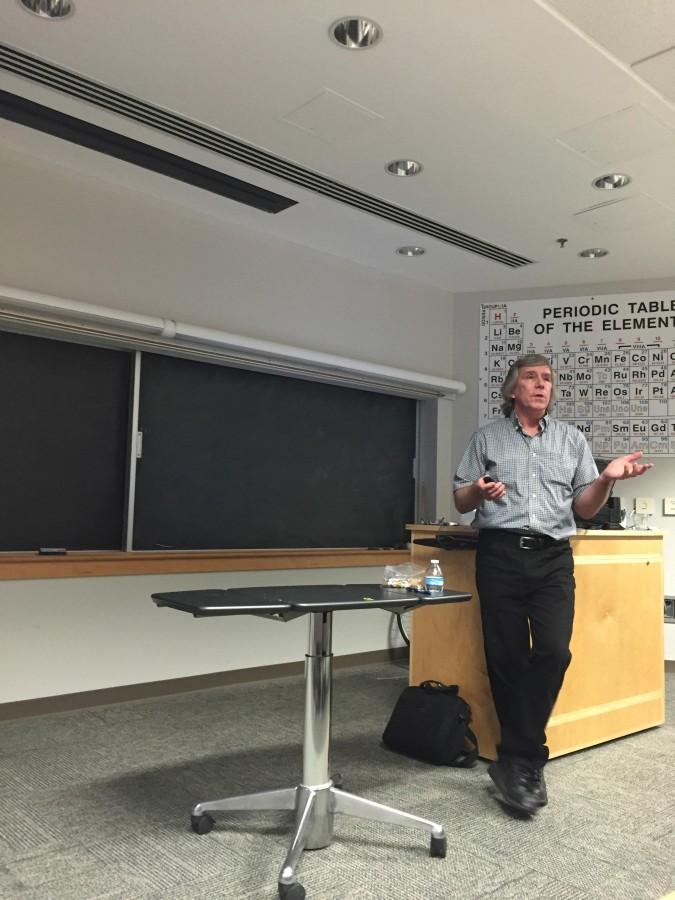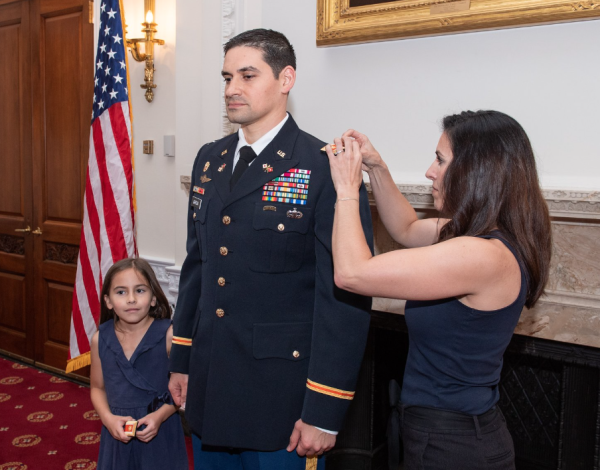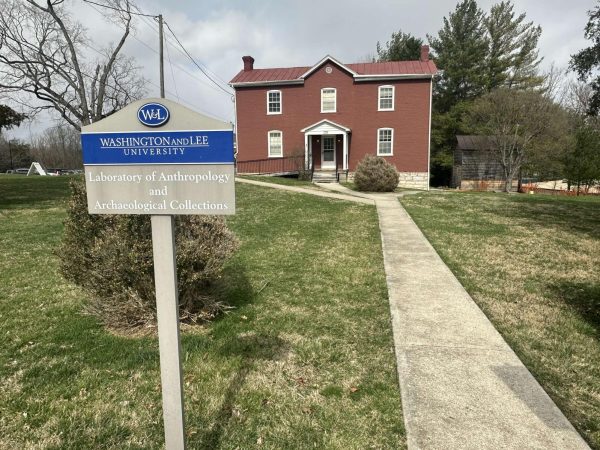A “sweet” lecture on candy
A food engineering professor and author explains the “science behind the sweets”
March 14, 2016
Do you expect to consume tons of jelly beans on Easter? Do you wonder what makes jelly beans chewy and sticky?
Richard W. Hartel, a food engineering professor at the University of Wisconsin-Madison and the author of “Candy Bites: The Science Behind Sweets,” said it all comes down to the chemistry of sugar.
Hartel gave his lecture, “Candy Chemistry: Through a Candy Store Window,” on Friday, March 11.
To start off the lecture, Hartel gave each member of the audience a bag of various candies, including hard candy, Life Savers, 3 Musketeers, Snickers, Tootsie Roll and Jolly Rancher. While the audience tasted each of the candies, Hartel demonstrated the chemistry behind the sweetness and flavor of the candies.
Hartel described the three kinds of sugar-based confections: non-crystalline, crystalline and partially crystalline. Most of the popular candies fall into one of the three kinds of sugar-based confections. For example, marshmallows, taffy and cotton candy are non-crystalline sugar-based confection candies.
Maren Lundgren, ‘18, said Hartel’s lecture brought back good memories she had of a spring term class she took last year.
“I thought it was really interesting,” Lundgren said. “It reminded me a lot of what we learned in the Science of Cooking class.”
Before her Science of Cooking class started, Lundgren performed experiments in her winter term class on food science and learned about things related to what Hartel talked about, like the crystallization of sugar.
Stephanie Chuang, ‘18, took the same Science of Cooking class with Lundgren.
“I really liked it, because I understood the chemistry he was talking about,” Chuang said.
For example, Hartel explained the interesting process of making cotton candy.
“You pour in sugar, crystallizing sugar, with a little color and flavoring absorbed on the surface into the center of the spinner,” Hartel said. “Inside the spinner is the little toaster oven that causes the temperature to go up and melt the sugar.”
As soon as the liquid sugar comes out from holes inside the spinner, Hartel described, the sugar’s temperature drops to room temperature, and the cotton candy stays the way it looks.
Hartel said it was fortuitous that he ended up in a university where candy and ice cream are important, and he was fortunate enough to get funds to maintain his research group.
“I think all of the things that I went through in school and in jobs all led to being able to do all sorts of the things that I do today,” Hartel said. “I did not fall into this [research] until I was 35. It’s something that came after a long time of trying things and figuring things out.”
Associate Dean of the College and Professor of Chemistry Marcia France first heard about Hartel’s research on a webinar of American Chemical Society and then read his book. Later, when she was looking for a speaker, France reached out to Hartel and invited him to W&L.
Associate Professor of Physics Irina Mazilu attended Hartel’s lecture and was thankful to France for organizing Hartel’s visit and sharing it with so many departments.
“The talk on candy science was very interesting and informative,” Mazilu said. “I enjoyed learning about the interdisciplinary aspects of food science and was surprised to find out how much physics is involved in candy research.”













